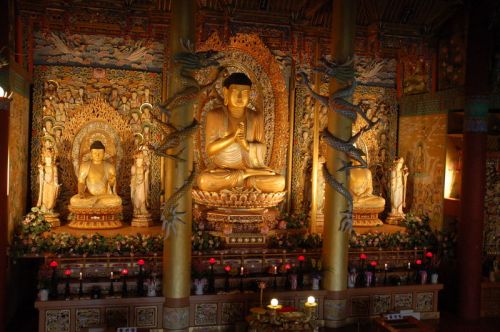 Death and burial issues bring up a complex mix of beliefs, faith, rituals, customs and cultural traditions. The Chicago Tribune's religion section was able to cover a few of the issues in a rather short story on the growing number of religious traditions specially catered to today in the Chicago area.
In some ways the story reads more like a business section feature than a story about religion. Whether that is a good thing or not is up to the reader.
Death and burial issues bring up a complex mix of beliefs, faith, rituals, customs and cultural traditions. The Chicago Tribune's religion section was able to cover a few of the issues in a rather short story on the growing number of religious traditions specially catered to today in the Chicago area.
In some ways the story reads more like a business section feature than a story about religion. Whether that is a good thing or not is up to the reader.
The headline of the story is clever but a bit generic: "Death is universal; funerals are not." This statement could apply to just about any city, regardless of its cultural diversity. As a former obituaries writer, I can say that customs and traditions vary greatly even within religions, but one can usually predict the person's religious denomination based on the type of funeral they are having.
This particular story deals with the fact that morticians in the Chicago area are "learning to cater to the burial customs immigrants are bringing to the U.S."
The various cultural customs involved are mentioned early on in the story, but in a sense that is just engaging in labeling. The reader doesn't learn the purpose behind some of the cultural traditions involved in death and burial until later on in the story:
Today, he is not surprised when patrons look to the lunar calendar to pick the right day and time for burial. He owns several Buddhist statues, which he uses for services. He does not flinch when patrons ask to include extra buttonless shirts in the casket or to burn paper money at the service.
Removing the buttons allows a spirit to travel unrestrained on its next journey. Paper money is an offering for the next life.
"When you don't follow through with those, you've not just provided a disservice to the deceased, but you've also possibly brought bad luck to the family," he said.
Pravin Purohit, who is helping launch the Hindu Cremation Society, said it is gratifying to see more people embracing an array of cultural and religious traditions. He mentioned, for example, how Hindus drape garlands – sandalwood for the most affluent – over loved ones as part of the cremation process, so that the spirit can move on to the next life. The increasing acceptance of these funeral customs is a sign that cherished traditions are finding a new home, said Purohit, a Skokie resident.
"You want to go with the rituals that your family has set for you," he said. "We are trying to tell you our beliefs and how we want to do it."
The challenge of this story is that the funeral companies aren't necessarily going to advertise or tell a reporter the spiritual or religious purpose that is behind almost every death and burial cultural tradition. For that matter, the religious purpose probably varies among families and traditions.
For many, it is more than just peace of mind that the cultural tradition is being followed. For the religious, there is a genuine sense of peace knowing that the deceased loved one has followed the path set out for them by their religion. You could write books about this subject, so it is hard to harp on a newspaper article for not covering the subject in more depth.
A final historical question I was left wondering was what immigrants in America have been doing for the last century to serve their death and burial needs. Perhaps it is not a significant a story in the Chicago area until recently, but immigrants to the United States are hardly a new development.
Photo is of a Buddha statue and the typical interior of a Buddhist temple in Jejudo, South Korea. Used from the Wikimedia Commons.
